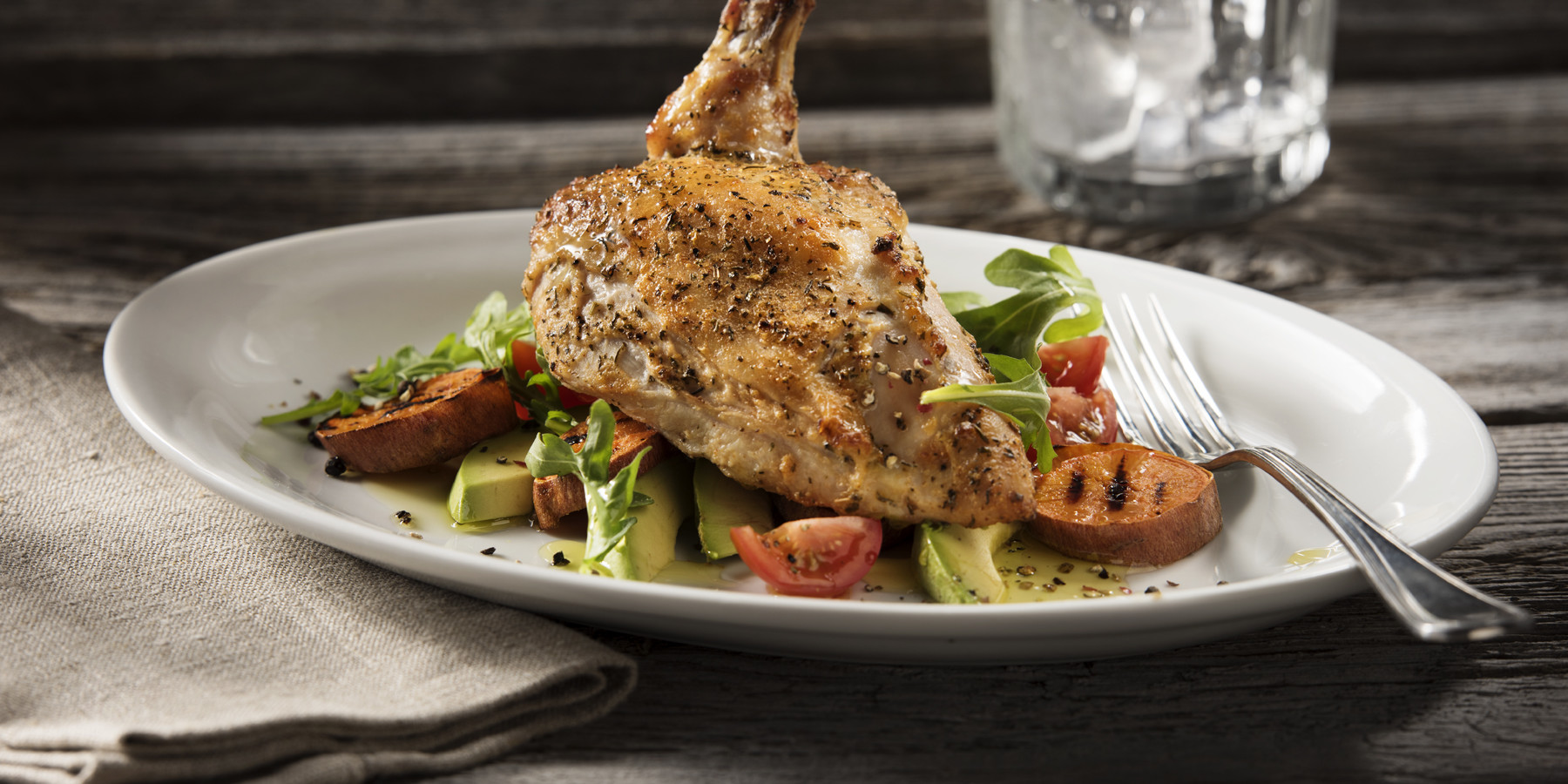Whether it’s white or dark meat, in a sandwich or mixed with pasta or atop salad, chicken is a familiar favourite and always a crowd-pleaser. Did you know that chicken is offered on more menus than any other protein item? It’s certainly one of the top protein choices in the Canadian diet! But just how well do you really know this nutritious and versatile poultry? Here’s an overview that explains the nutritional value of chicken and busts common misconceptions.
What’s the nutritional difference between varying cuts of chicken?
Chicken is generally divided into white meat (breast and wings) and dark meat (thigh and drumstick). Fat in chicken is often found in the skin, so skinless cuts tend to be leaner. The cuts vary in calories, protein and fat content, as illustrated in the chart below:
| For 100 grams | Calories (kCal) | Protein (grams) | Fat (grams) |
| Breast, without skin | 165 | 31 | 3.5 |
| Breast, with skin | 197 | 30 | 7.8 |
| Drumstick without skin | 176 | 29 | 6.8 |
| Drumstick with skin | 215 | 27 | 12 |
| Wings with skin | 254 | 24 | 17 |
| Thigh, without skin | 176 | 25 | 8.6 |
| Thigh with skin | 229 | 23 | 15 |
From: Canadian Nutrient File
Is it okay to eat chicken skin? It sure is! Chicken skin is mostly fat, and for years we were told by nutrition experts to discard it. But fat isn’t as bad as we once thought – and unsaturated fat is recommended in the diet. Interestingly, not all of the fat in chicken skin is saturated – the majority is actually monounsaturated fat, which is not detrimental to heart health. Plus, keeping the skin on makes the chicken juicier.
Is it better to serve white or dark meat?
Both have advantages, so serve a variety of cuts. White breast meat is higher in protein and lowest in fat. Dark meat takes on its hue because it contains more myoglobin, an oxygen-carrying protein that’s rich in nutrients. So, dark meat is higher in iron, zinc and B-vitamins than white meat. Because dark meat is higher in fat, it has a juicier texture. There are health benefits no matter which cut you serve.
Is chicken a source of any vitamins and minerals?
All cuts of chicken are a source of vitamin D, B-vitamins like niacin, riboflavin, B6 and B12, as well as the minerals iron, magnesium, phosphorus and zinc. Dark meat tends to contain more vitamins and minerals than white meat, but both are great!
Are chickens raised in Canada given hormones or steroids?
Nope. According to the Chicken Farmers of Canada, steroids and hormones are illegal to use when farming chickens in Canada, and it’s been this way since the 1960s. Chicken marketed as hormone-free is a scam for two reasons: 1. There are no hormones added to ANY chickens raised in Canada, and 2. Chickens naturally produce hormones – just like humans do (they are animals!), so hormone-free is impossible!
What’s new in chicken?
Maple Leaf Foodservice just introduced a delicious new product which is ideal for the healthcare and retirement markets – Maple Leaf Breaded Chicken Breast Cutlet. This new product offers a consistent 85g size, contains 13g of protein, is made with premium quality whole muscle chicken, and bakes beautifully in the oven. And it’s less than $1.00 per portion!
It’s the perfect compliment to Maple Leaf’s extensive line-up of breaded chicken products. You can add variety to your menu by using any of these Canadian farm-raised products:
- Maple Leaf Supreme Crunch Chicken Breast: For the crispiest, crunchiest fried chicken sandwich, this is your ideal choice.
- Maple Leaf Tender Lovin’ Chicken: These chicken tenders are all white meat and are great on their own, or served atop salad or in a sandwich wrap.
- Schneider’s Battered Chicken Balls: These crispy chicken balls are great for Chinese-inspired dishes served with sweet & sour sauce or plum sauce
- Maple Leaf Crispy Chicken Breast Burgers: These everyday burgers are a great choice for chicken lovers! Serve in a bun, topped with lettuce and tomato.
- Maple Leaf Homestyle Chicken Breast Nugget: These traditional all white meat nuggets are great for dipping.


